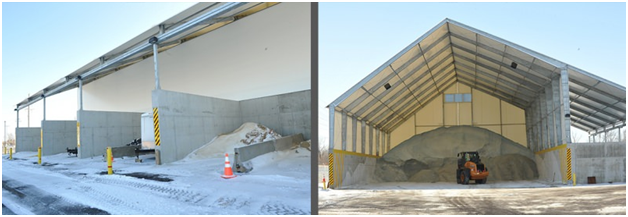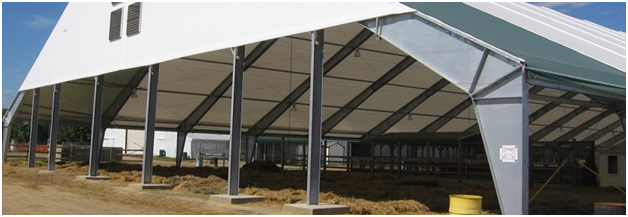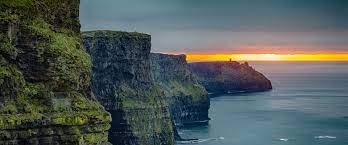When most people think about temporary or permanent structures, they think about traditional materials – probably PVC for temporary structures and wood or brick for permanent ones. Thanks to new materials and techniques, however, modern fabric structures offer a range of advantages, making them a serious contender for a wide variety of purposes.
Not Just a Big Tent
Modern fabric construction covers everything from warehouses to aircraft hangers and tensile fabric canopies, so whatever your need, it is worth considering fabrics.
Fabric structures offer high degrees of flexibility. Because of the low weight of the construction materials, they allow you to maximize the use of your space while still providing protection. They can range from a canopy providing UV and weather protection to a permanent office extension.
Fabric structures can be constructed much more quickly than traditional structures because of the relatively low need for structural support elements. For a temporary structure, this also means they can be disassembled very quickly, relocated, reused and, when no longer needed, usually fully recycled.
The Cost Benefits
As mentioned before, fabric structures can be constructed very quickly, leading to very low labour costs, which are then added to by the low cost of the fabric itself compared to traditional structures. But this low cost doesn’t come with low quality. Modern materials, such as the silicon glass weave offered by http://signaturestructures.com/, boast a 30-year expected lifespan, which is comparable to higher-cost PVC structures.

Looking past the construction, the potential benefits continue. Fabric structures are extremely energy-efficient and regulate their own temperature to a significant degree, staying about 10 degrees warmer than outside temperatures in colder weather and up to 20 degrees cooler in warmer weather, substantially cutting down on heating and cooling costs for populated structures. The translucent nature of some fabrics can also provide natural light, cutting down further on costs.
Fabrics have cost and usability benefits, almost regardless of application. If you have a small plot of land, fabric structures allow you to maximize the usable space at minimal cost, even for a fully enclosed structure. Over a larger area, fabric constructions go up extremely quickly at a low cost and can be used as anything from workshops and maintenance bays to temporary or semi-permanent housing. If you have a construction project, regardless of the application, you should seriously consider fabrics.



